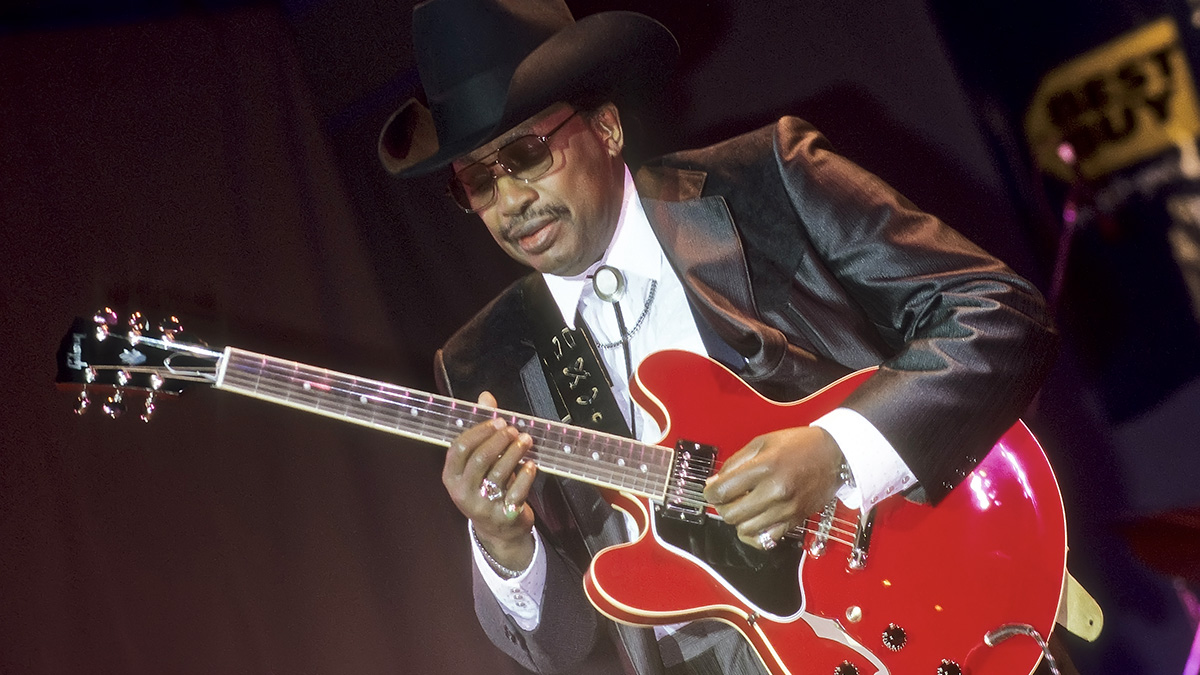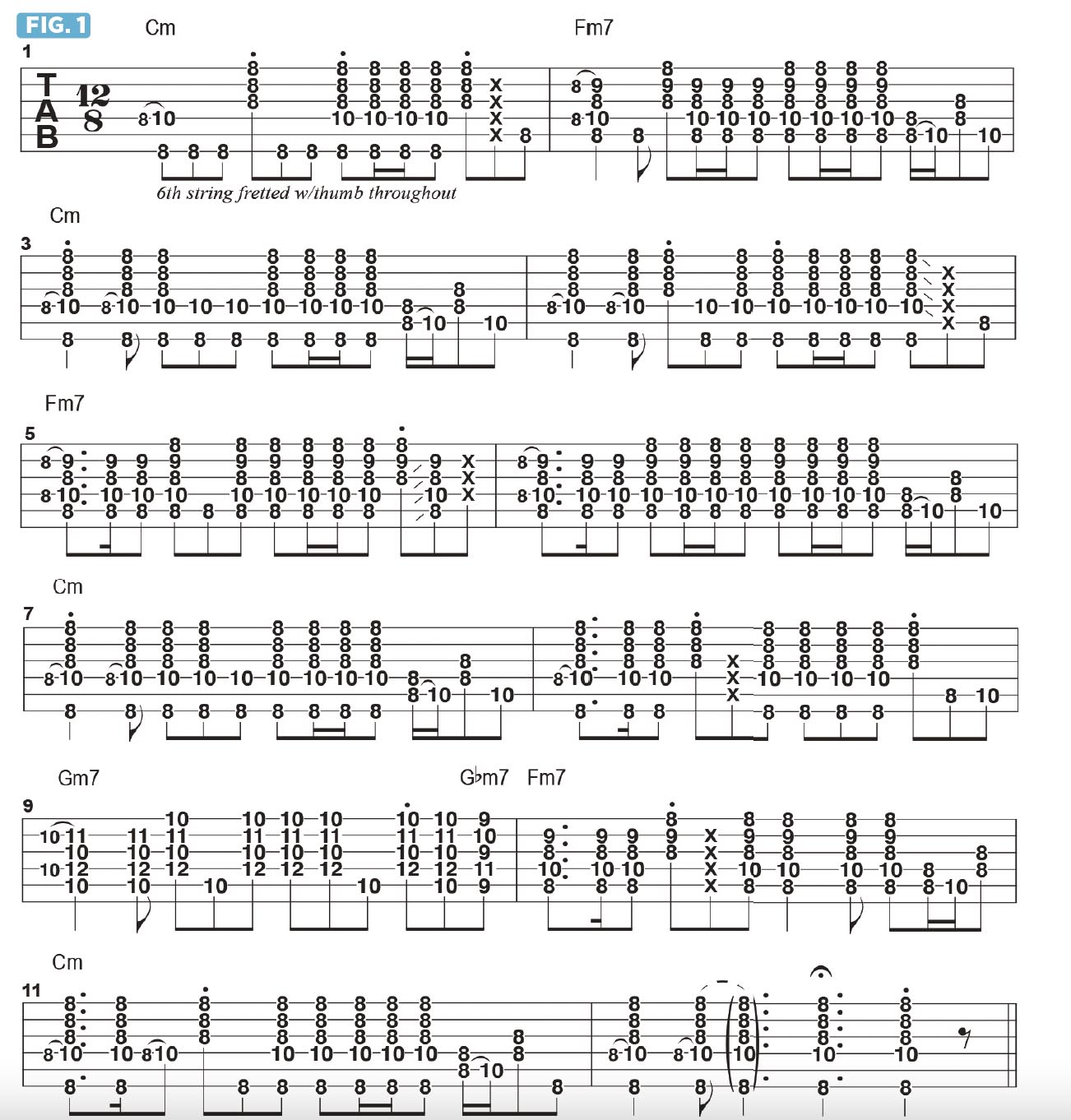Kirk Fletcher teaches you the playing style of blues guitar great Otis Rush
With a progression that references the classic “quick change to the four chord” this lesson takes you inside the minor key blues of the West Side Chicago blues legend

This month, I’d like to talk about one of my favorite blues musicians of all time, Chicago guitar legend Otis Rush. Otis had an incredibly distinct style and was especially adept at playing over a minor blues.
Many of his most celebrated songs, like All Your Love, Double Trouble and So Many Roads, are classic minor blues songs. His soloing was always so lyrical, his vibrato was amazing, and there are a handful of key elements in his style that make his playing instantly recognizable.
As an aspiring guitar player, I tried hard to pick up on so many of the different essential things that Otis does in his many great recordings.
Figure 1 presents a moderate-tempo 12-bar blues form in the key of C minor, played in a swinging 12/8 feel. The progression indicated here utilizes what is known as the “quick change to the four chord.”
Bar 1 begins on the tonic, Cm, and then the four chord, Fm, is played in bar 2 before returning to Cm for bars 3 and 4. In blues progressions without the “quick four,” the first four bars of a 12-bar progression remain on the tonic, which in this case would be Cm.
Outlining the remainder of the 12-bar progression, bars 5 and 6 are played on the four chord, Fm, which then resolves back to Cm in bars 7 and 8. Bar 9 moves up to the five chord, Gm, followed in bar 10 by a return to the four chord, Fm, and then the last two bars of the form remain on the tonic, Cm.
In this rhythm part, I often alternate between accents on the lower and higher strings. Throughout, I fret all of the notes on the 6th string by hooking my thumb over the top side of the neck. This frees up my other fretting fingers for chordal embellishments. For example, using thumb fretting in this way allows me to employ decorative index-to-ring finger hammer-ons whenever I play the Cm chord.
All the latest guitar news, interviews, lessons, reviews, deals and more, direct to your inbox!
I also employ hammer-ons, again as melodic embellishments, when playing the Fm chord in bars 2, 5 and 6. I do this by initially barring across the middle four strings with my index finger at the 8th fret and then hammering my ring finger two frets higher on the 4th string and my middle finger one fret higher on the 2nd string.
As you play through this 12-bar rhythm guitar form, focus on all of these details in the way the chords are articulated, as each little twist adds substance and musicality to the part.
As I stated earlier, Otis was an incredible soloist, and his playing influenced me, as well as the likes of Jimi Hendrix, Eric Clapton and many others.
Figure 2 offers some licks in Otis’ style, played over the first four bars of our 12-bar C minor blues progression. I begin in bars 1 and 2 with Cm and Fm triads, fretted on the top three strings. You'll hear Otis play similar phrases in So Many Roads and All Your Love.
In bars 2 and 3, I play a classic Otis-style line that demonstrates his beautifully melodic phrasing approach. I highly recommend that every aspiring blues guitarist listen to Otis Rush for musical inspiration.


